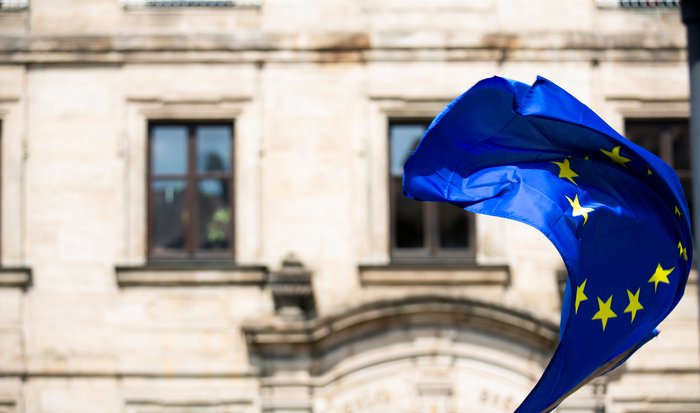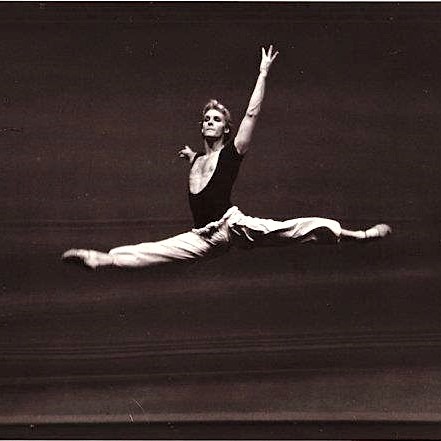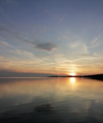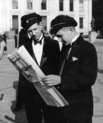The Nordics in the World
The Nordics in the World
On this theme page, you can find articles and films about the Nordics in the World.
This encompasses internationalism and the Nordics’ early relationship with the United Nations, articles on development aid, foreign policy and post-colonialism. Aspects of the region’s association with Europe is also included as well as film, TV and literature that has reached beyond the Nordic countries.
In the article internationalism and the Nordic countries, you can get a general overview of the Nordic countries’ general commitment to international institutions and law, agenda-setting and bridge-building between North and South, East and West alike. The principles and aims of the United Nations resonate in the Nordic countries, which are small welfare states with an appreciation of international law, solidarity and multilateral problem-solving. From the time of the League of Nations (the precursor to the United Nations) to the 1990s, the Nordic region developed and operated a caucusing and voting group.
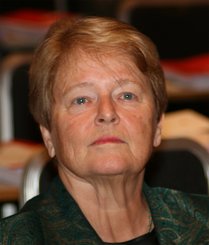 People from the Nordic countries have held influential positions at the United Nations, such as Trygve Lie and Dag Hammarskjöld in the 1950s and 1960s. In 1983, Gro Harlem Brundtland (b. 1939) was asked to establish and lead the World Commission on Environment and Development (WCED) by the Secretary General of the United Nations. She went on to become Director General of the World Health Organization (WHO), amongst other things. In 1981 at the age of 41, she became Norway’s youngest and first female Prime Minister.
People from the Nordic countries have held influential positions at the United Nations, such as Trygve Lie and Dag Hammarskjöld in the 1950s and 1960s. In 1983, Gro Harlem Brundtland (b. 1939) was asked to establish and lead the World Commission on Environment and Development (WCED) by the Secretary General of the United Nations. She went on to become Director General of the World Health Organization (WHO), amongst other things. In 1981 at the age of 41, she became Norway’s youngest and first female Prime Minister.
PICTURE: Gro Harlem Brundtland in April of 2009. Photo: GAD (CC BY-SA 3.0).
Development aid and the Nordics
The Nordic countries traditionally provide high levels of development aid, although it was not until around 1960 that creating ’development’ through economic assistance seriously broke through internationally. Read about the beginning of aid-giving in Norway, which started with the India Foundation, and an overview of the development of Danish development aid since 1960 to 2010. Nordic disability organizations have been carrying out development projects in the Global South since the 1960s and an overview of this is given in the article disability, development and the Nordics, 1960s-2000. Connected to this is the career of Bengt Olof Lennart Lindqvist (1936-2016), a Swedish politician and an active member of Swedish and international disability organizations following his position as deputy minister for social security in 1985, the first Swedish minister with a visual impairment.
The Nordics as colonial powers
We are building up an assortment of articles on the colonial and post-colonial relationships associated with the Nordics. A succinct overview of some of these relationships and legacies is set out in the film 'Nordic postcolonialism' presented by Lill-Ann Körber.
The article on the Danish decolonisation of Greenland, 1945-54 reflects the anti-colonial sentiment after the Second World War and Greenland becoming a county of Denmark. Prior to this, Denmark had sold the Danish Virgin Islands to USA in 1916. As part of that deal, on 4th August 1916, the American government issued a declaration to the Danish government that it would not raise objections if Denmark extended its interests in Greenland to include the entire island. This document can be seen here: USA's declaration on Danish sovereignty of Greenland, 1916.
Also on the Danish Virgin Islands, you can read about the Fireburn uprising. Even after the abolition of slavery in 1848, conditions for workers in the plantations of the Danish West Indies were not much improved. This led to unrest and the Fireburn uprising on St. Croix in 1878. The precise events during the uprising have been little studied, partly due to the court and other records being in Danish, but it has taken on a meaningful role in the history of the island, particularly in the ensuing colonial and post-colonial narratives such as that of ’Queen Mary’.
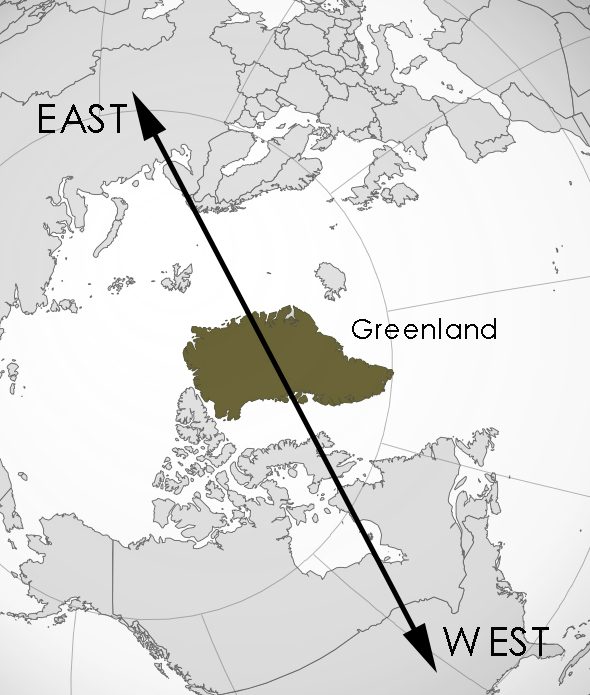
PICTURE: Greenland's geographical position between East and West proved to be of great interest to the Americans during the Cold War, an interest that has flared again in recent times, as explained in Thorsten Borring Olesen's Outlook on nordics.info.
The Nordic countries and foreign policy
From the aftermath of the Second World War and during the Cold War, the Nordic countries were often attributed with being neutral , or ‘non-aligned’, or ‘non-aligned’. The article Norway, the West and the Soviet Union, 1944-48 discusses how Norway was seen as a bridge-builder at that time between East and West. Indeed, the Nordics being situated between the Eastern and Western blocs, both geographically and from the point of view of international negotiations, was important with respect to international relations. This was played out in many contexts, such as, the strategic importance of Greenland as described in an article on Buying Greenland? Trump, Truman and the 'Pearl of the Mediterranean' which looks back at lessons learnt during the Truman administration compared to today.
All the Nordic countries are members of the Arctic Council, which was established in 1996 by the Ottawa Declaration with the intent of fostering “cooperation, coordination, and interaction between the Arctic states.” Member parties work together towards the sustainable development of the Arctic region.
The Nordic countries have moved away from the policy of neutrality, certainly since the end of the Cold War. Read an introduction to Nordic arms exports since 1990, with a focus on Finland, which sets out that all Nordic countries, excluding Iceland, have exported weapons to countries involved in armed conflicts or violating human rights during the post-Cold War period. As Nordic countries often speak for peace and humanitarian work in the international arena, their arms exports have repeatedly drawn criticism.
Sweden is well known for having a feminist foreign policy – as are the other Nordic countries to some extent. Swedish foreign policy has long been informed by issues relating to gender which was cemented in 2014 by the launch of its Feminist Foreign Policy and it has been heralded as ground-breaking and the most comprehensive of its kind. The Swedish government has however been criticised for hypocrisy, however, as they continue to be involved in arms trading.
The Nordics’ relationship with Europe
Each of the five Nordic countries has had differing economic relationships with Europe, with Finland currently being the only country to have adopted the euro, and Iceland and Norway the only Nordic countries to not have become members of the EU. A brief overview can be read in the article the Nordic countries and economic integration.
An overview of Denmark and its integration with Europe, 1940s to the Maastricht Treaty in 1993 sets out that Denmark has been a cautious participant of European supranational integration since the Second World War, and the driving force behind Denmark's accession to the EEC was the desire to become part of an open European economy, rather than support for federalism per se.
PICTURE: European integration has been - and still is - a widely debated topic in the Nordic countries, which each have differing relationships with the EU. Photo: Markus Spiske, Unsplash.
Denmark and Norway both held referenda with respect to joining what was then called the European Economic Community in autumn 1972. The referendum in Denmark was positive and in Norway negative. Two days after the Danish referendum (where 63,7 % of Danes voted yes to membership), the French newspaper Le Monde published an article entitled 'A marriage of convenience' in which the victory for the yes-campaign was attributed to economic realism and Danish export rather than Danish enthusiasm for the European project. In Norway, the referendum result was the opposite. Read a translated article from the federalist journal L'Europe en formation published in November 1972 about the two referenda. Interestingly, Norway is described as a "poor nation" and Norwegians were reportedly scared away from membership due to the likelihood that French fishermen would be able to fish in Norwegian waters, bringing uncertainty over their livelihoods.
In Denmark’s relationship with Europe since 2000, you can read that the country has been characterised by a ‘soft’ type of Euroscepticism, and how there has been a (failed) referendum on the accession of Denmark to the single currency in 2000 and a (failed) referendum in 2015 to get rid of Denmark’s four reservations.
Nordic arts
Most of our over 50 biographies of Nordic people are of well-known authors, poets and filmmakerswhose work has reached beyond the borders of the Nordics.
The arts, including Nordic ballet and Nordic architecture, are notable by their important connection and distribution outside the Nordics.
PICTURE: Swedish ballet dancer Johan Renvall in rehearsal at The Royal Swedish Opera, c. 1985. Photo: Enar Merkel Rydberg (CC BY-SA 4.0)
Nordic crime fiction, such as global bestsellers by the Norwegian Jo Nesbø and the Swede Stieg Larsson, has been a very popular export from the Nordic countries, particularly since the 1990s. It is usually characterised by social realism, gloomy locations and morose detectives, but often questions society in a meaningful way, such as, the state of justice, equality or current debates specific to the Nordic welfare societies. Recurrent motifs are often used, such as cracks (in Nordic Noir) or smart phones (in Nordic Noir). Research at Aarhus University has been undertaken into how Danish TV series, such as Forbrydelsen (The Killing, 2007-2012), the Danish/Swedish co-production Bron/Broen (The Bridge, 2011-2018), have been received in other countries. You can hear more about how they have travelled globally in the presentation, Why did the world fall in love with Danish TV drama?, and specifically for audiences in Argentina and audiences in Germany. Read also about how the Norwegian teen-hit Shame has been received by youth in Russia and subverted the overriding political ideology against same-sex relationships.
Here is a list of articles, in the order that they have been published, that are to do with the Nordics in the World theme:
Further reading
- Birgitta Steene, Ingmar Bergman: A Guide to References and Resources (Boston, Mass.: G.K. Hall, 1987).
- Christine Ingebritsen, (2002) ‘Norm entrepreneurs: Scandinavia’s role in world politics’, Cooperation and Conflict 37 (2002) pp.11-23.
- Christopher S. Browning, ‘Branding Nordicity: Models, identity and the decline of exceptionalism’, Cooperation and Conflict 42 (2007) pp.27-51.
- Jakob Stougaard-Nielsen, Scandinavian Crime Fiction (London: Bloomsbury, 2017).
- Norbert Götz and Heidi Haggrén, eds., Regional Cooperation and International Organizations: The Nordic Model in Transnational Alignment (London: Routledge, 2009).
- Thorsten Borring Olesen, 'Tango for Thule. The Dilemmas and Limits to “the Neither Confirm nor Deny Doctrine” in the Danish-American Relationship, 1957-1968', Journal of Cold War Studies, 12, 3 (2011), pp. 116-147.
- Torben M. Andersen et al., The Nordic Model. Embracing globalization and sharing risks (Helsinki: ETLA B, 2007).
- William C. Miller, Nordic Modernism: Scandinavian Architecture 1890-2015 (London: Crowood Press, 2016).
